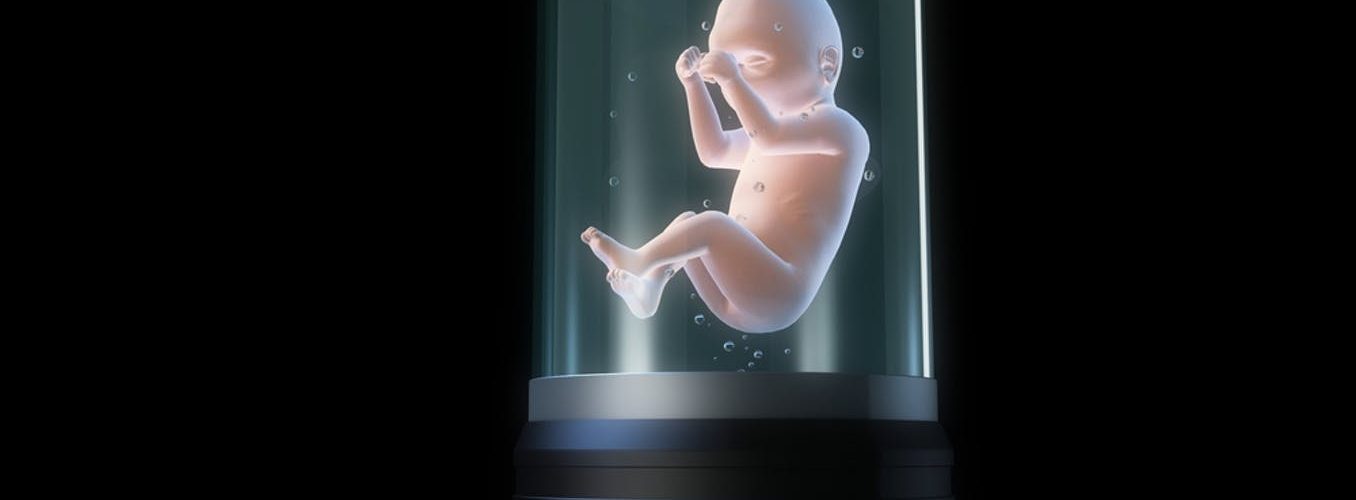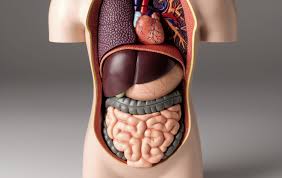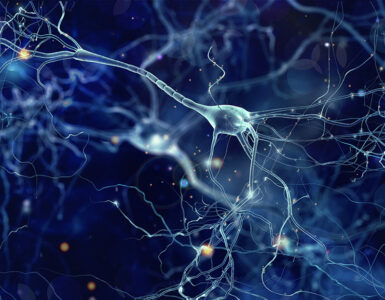by A’liya Spinner
Baby on Board
Millie quiets the GPS as she turns the car into the lot, parking next to a silver sedan and turning off the engine. The flat stretch of asphalt is relatively empty; the few other cars she sees probably belong to the employees. After a moment of verifying the address of the nondescript building, Millie climbs out of her vehicle and opens the backseat door.
For someone who is six months pregnant, she’s kept a relatively slender figure, and has no trouble bending over to undo the seatbelt and pull the heavy, glass-topped contraption out of the car, unhooking its wheeled legs so that it stands and moves easily on the pavement beside her. Her flexibility and maintained shape is, of course, thanks to the fact that her pregnancy isn’t being carried out inside her womb; she glances affectionately down at the growing fetus inside the portable ectogenesis machine, checking to make sure the car ride didn’t jostle any wires or alter any of the very sensitive environmental controls. Nothing’s out of place; the baby, which has only recently started to look properly human, seems as sleepily content as ever. Satisfied, Millie locks the car, grabs ahold of the “crib’s” handlebar, and begins to gently push it up a ramp and through the sliding doors of the building.
The lobby is generic and aseptic, furnished with unremarkable cushioned chairs, side tables with magazines, and a receptionist desk underneath an unlit sign: Unborns’ Daycare. The young man behind the counter looks up from his computer and smiles welcomingly.
“Do you have a reservation?” He asks, pulling up a new window and hitting a few keys.
“Yes, the thirteenth through the twentieth. Under the name ‘Greene’.” Millie taps her fingers idly on the counter, glancing over a small rack of pamphlets about the latest mobile ectogenesis machines, the benefits to external pregnancy, and guides to navigating modern parenthood.
“Here it is.” He clicks and taps a few more times, then looks up at her. “You’re all checked-in and the nurse will be out shortly. If you’re comfortable sharing— what’s the occasion?”
“My husband and I are surprising our five-year-old with a trip overseas before the new baby keeps us too busy to travel,” Millie answers. She is increasingly glad that she and her partner have opted for an external womb this time around, even though her first, natural pregnancy didn’t have too many complications beyond the expected discomfort. Riding in planes, boats, and trains— as well as just walking around big European cities— for a week while six months pregnant would’ve been a hassle, and this way, she and her husband could still enjoy a little Italian wine now and then without worrying about what it might do to the baby. It was hard to overstate the convenience of ectogenesis, as well as the reassurance that she receives every morning, being able to look in and see that her child is still healthy and developing well.
A moment later, a door to the left of the desk opens and out shuffles a woman in a turquoise nurse uniform. She, like the receptionist, maintains a broad and friendly smile.
“Greene?” She doesn’t even wait for Millie’s nod before making her way to the carriage and peering down at the baby inside. “What a handsome little one!”
“Thank you. We think so, too.” Millie turns the machine to offer the handles to the nurse, which she accepts with a practiced confidence that many people didn’t have around the relatively exotice ectogenesis machines. “There’s someone in the building at all times, right? And you have our number to call if there’s any complications?”
“We have trained neonatal nurses in the building all day every day,” the daycare worker replies with an affirming smile. “And your number and your partner’s number are on file. Enjoy your break, Mrs. Greene, your baby will be well taken care of.”
Millie nods gratefully. The vacation will be a good chance to relax and recharge before coming back and “giving birth”— which, although it will no longer be as painful or time-consuming, still represents bringing new life into the world and her family. No matter what womb it’s formed in, it’s still her baby, and she’s still its mother. She kisses the glass top of the carriage goodbye, promising to return to her unconventional pregnancy soon.
What is the Artificial Womb?
The artificial womb, also known as ectogestation, is a general term for a number of medical devices used to keep fetuses alive ex-utero (outside of the uterus.) Primitive ectogestation machines already exist— but these machines aren’t designed to grow babies from start to finish. Rather, artificial wombs are meant to save the lives of fetuses already on the verge of being viable through natural birth. These systems, capable of replicating the function of placentas and umbilical cords, support continued gestation for premature babies, rather than putting them in prenatal emergency care with high rates of mortality and morbidity. But some researchers believe that these placental mimics can be used not only to keep fetuses alive long enough for their lungs to finish developing, but to nourish a zygote through the entirety of an artificial pregnancy.
How does it work?
In March of 2021, Israeli scientists released information on their recent success growing mouse embryos in artificial wombs for upwards of twelve days, about half of the animal’s natural gestation period. The researchers did this by adding blood serum from human umbilical cords, “agitating” the cells in jars, and then pumping a pressurized oxygen mixture into the ectogestation machine, keeping the embryos oxygenated. According to Jacob Hanna, the leader of the team, the subjects only died because they’d grown so large that oxygen couldn’t efficiently diffuse through them without the natural blood system a placenta provides, but before then, they were perfectly healthy— they even had beating hearts and well-formed limbs.
In the original study they published, Hanna and his team discussed a number of other experiments involving toxins, dyes, and viruses; prior to now, the earliest stages of an embryo were incredibly difficult to study, but now the team has access to a resource that allows them to monitor development and the effects of certain additives on embryo health. Hanna believes that other scientists will want to use this technology, too, probably to extend the life of stem cells coaxed to behave similarly to early-stage embryos called blastoids. Hanna believes this research will be invaluable to learning more about embryological development, and some of his colleagues see even more applications. Bioethicist William Hurlbut, for example, believes this technology could be used to obtain primitive organs from first-trimester embryos for use in transplant medicine.
But what about growing healthy babies to full term? As of now, the technology to turn a zygote into a breathing baby doesn’t exist, but it’s getting closer every year. Modern “biobag” technology, which is used to support premature babies until they’ve reached a safe stage of development, is capable of facilitating the exchange of amniotic fluids and nutrients, while cannulae pump oxygen into the subject’s bloodstream, which mimics normal placental function. In clinical trials, the artificial womb was able to stabilize circulation and blood pressure, continue healthy lung development, and prevent deadly infections by virtue of its closed system.
As our understanding of gestation, embryological health, and ectogenesis continue to evolve, so will our ability to artificially support younger and younger fetuses. By implementing Hanna’s embryo-growing technology, which he believes could be used to support a human embryo until the first trimester, alongside artificial wombs intended to save second and third trimester fetuses, it’s possible we may soon see babies fertilized, grown, and born all ex-utero.
Implementation
There is no sole group or identity of people that would benefit from access to artificial wombs. As the technology expands, it will continue to save the lives of sick mothers and premature fetuses, as it is already used today. But it will also become popular among people who are unable to naturally conceive, the LGBTQ+ community, and, of course, laboratories working with animals. Growing babies ex-utero may help childless families circumvent the expensive and sometimes legally problematic or unethical surrogacy process, as well as same-sex couples who have been denied children due to homophobia pervasive in the adoption and foster systems of many states and countries. Transmasculine people taking testosterone and those taking hormonal birth control to combat chronic illnesses such as polycystic ovarian syndrome would no longer need to stop their treatments to carry babies to term. And even those individuals with no reason not to have a traditional, in-utero pregnancy except their own personal preference deserve the opportunity to have children and families.
So beyond our currently limited technology, what’s stopping us? In some countries, such an England, artificial wombs may be illegal on a technicality— abortion laws prevent pregnancies from being ended prematurely after twenty-four weeks, even if the fetus is not actually harmed, so pregnant people needing or wanting to finish their baby’s gestation ex-utero for any reason may find themselves unable to utilize the technology. Others may not even be able to start the process; in some countries and in many laboratory or medical facilities, the “14-day Rule” prohibits the ex-utero growth of human embryos beyond two weeks. In some places, this law has been dropped or is being reconsidered, but in others, it fully prevents the early usage of ectogestational technology. Finally, as with most new technologies, artificial wombs promise to be very expensive, and therefore exclusive only to the wealthy or elite. But, many technologies that start as unattainable eventually fall into the hands of the public, through private companies, government subsidies, and the perfection of its manufacturing. Regardless of its initial price tag, the release of a functioning ectogenesis machine for personal use would eventually revolutionize the lives and reproduction of the entire world.
Social Justice Factors
To many feminists, the artificial womb represents the last threshold to women’s emancipation and freedom. Eliminating the heavy physical, emotional, and mental toll of pregnancy allows people with uteruses to freely pursue desires and activities outside of their reproductive role, as biological men do, and further separates them from the patriarchal ideals of the nuclear family and stay-at-home, caregiving mothers. In this way, ectogenesis tackles institutional sexism on both a physical and conceptual level, taking pregnancy from a specifically feminine “issue” and making it something to be shared equally between parents.
But it is for that very reason that other activists see artificial wombs as dangerous, unethical, and actively harmful to women. Australian sociologist Robyn Rowland argues that ectogenesis will make women obsolete by handing their innate power over to the control of men, leading to “The Death of the Female”, as she and other feminists called one of the conferences on the subject. Others worry about the babies themselves, speculating about the weak bond between a machine-grown child and its parents, or about the commodification of life once humans can be made on command, without the need for an intimate, internal pregnancy.
Perhaps most contentiously of all, however, is the artificial womb’s effect on the abortion debate. Currently, many laws ban abortion after the fetus can be considered “viable”, but what does that mean in a world where a fetus at any stage of developemnt could potentially be saved by an ectogenesis machine? Should all people seeking to end a pregnancy be required to pay for an artificial womb before the child can be put up for adoption? Do parents have the right to terminate an artificial pregnancy, given that the fetus is not inside of anyone else’s body? These questions— and many more like them— have no easy answers, and while it’s impossible to deny that ectogenesis machines would help bring reproductive equality to the LGBTQ+ community and save the lives of endangered mothers and babies, its potential misuses also cannot be ignored, and will have to be faced as a society moving forward into the yet unknown future of artificial wombs.
Non-human Prospects
But not all uses of the ectogenesis machine have to involve humans. A little-talked about but promisingly viable use of the artificial womb is its usage on and for animals. Ectogenesis is already more effective on animals than it is on humans, and could be used for more than just saving premature lambs, but instead for saving whole species. Many animals, for instance, refuse or struggle to breed in captivity for a variety of reasons, including age, pickiness, and short estrus cycles. Mechanical wombs eliminate some of the biological uncertainty of artificial insemination, especially for older animals who cannot support a pregnancy, and can be used to produce a greater number of young in a shorter time (useful in the case of elephants, rhinoceroses, and other very slowly reproducing species.) Conservationists also have the ability to monitor the embryos at a much closer level, allowing them to detect diseases or deformities early in the developmental process. More domestically, ectogenesis eliminates the need for inhumane “puppy mills”; with the artificial womb, breeders are able to create more of a rare or desirable dog, cat, and other sought-after pet species without keeping living, pregnant individuals in poor conditions. The exotic pet trade, in which many endangered or foriegn animals die in transit between locations, also becomes obsolete when licensed breeders can use artificial wombs to locally raise exotic animals.
Regardless of whether or not ectogenesis machines are ever used to grow a human child from embryo to birth, artificial wombs are already in use, and will likely only increase in popularity in the coming years. For both humans and animals, external pregnancy is life-saving for parents and children, and may someday work towards equality and fight back against extinction. But overall, no matter how we use, regulate, or protest it, ectogenesis has arrived, and it is, in some form, here to stay.









